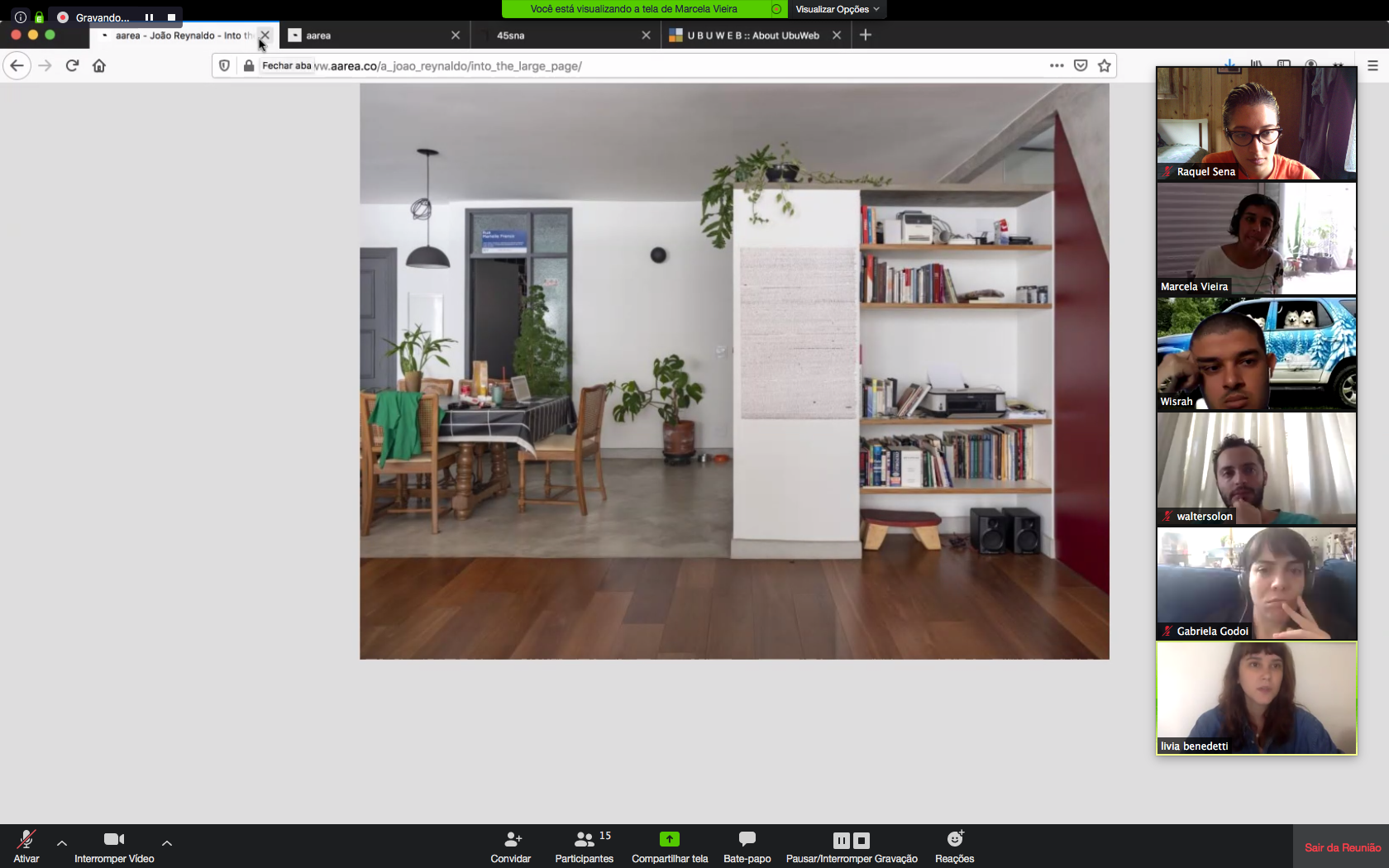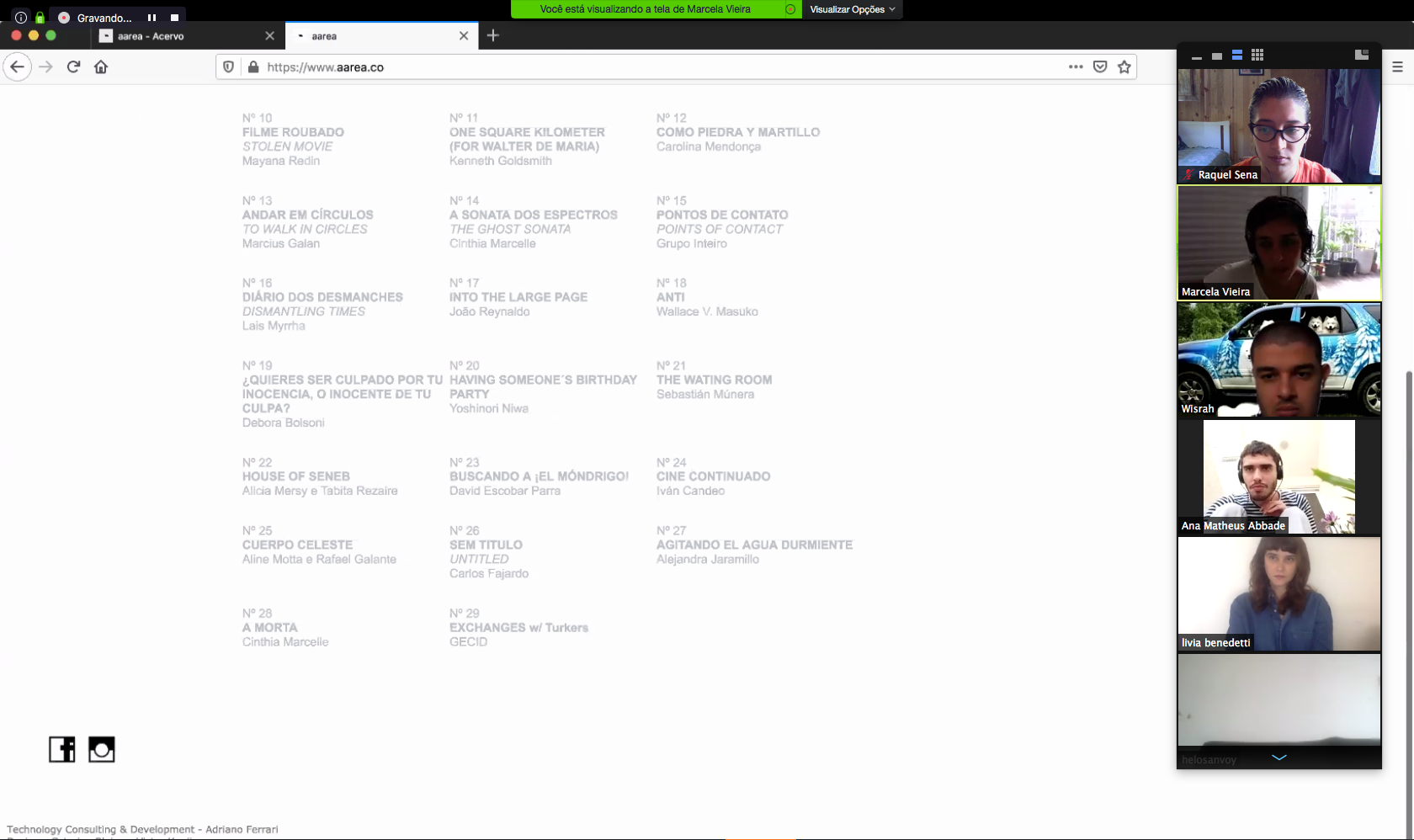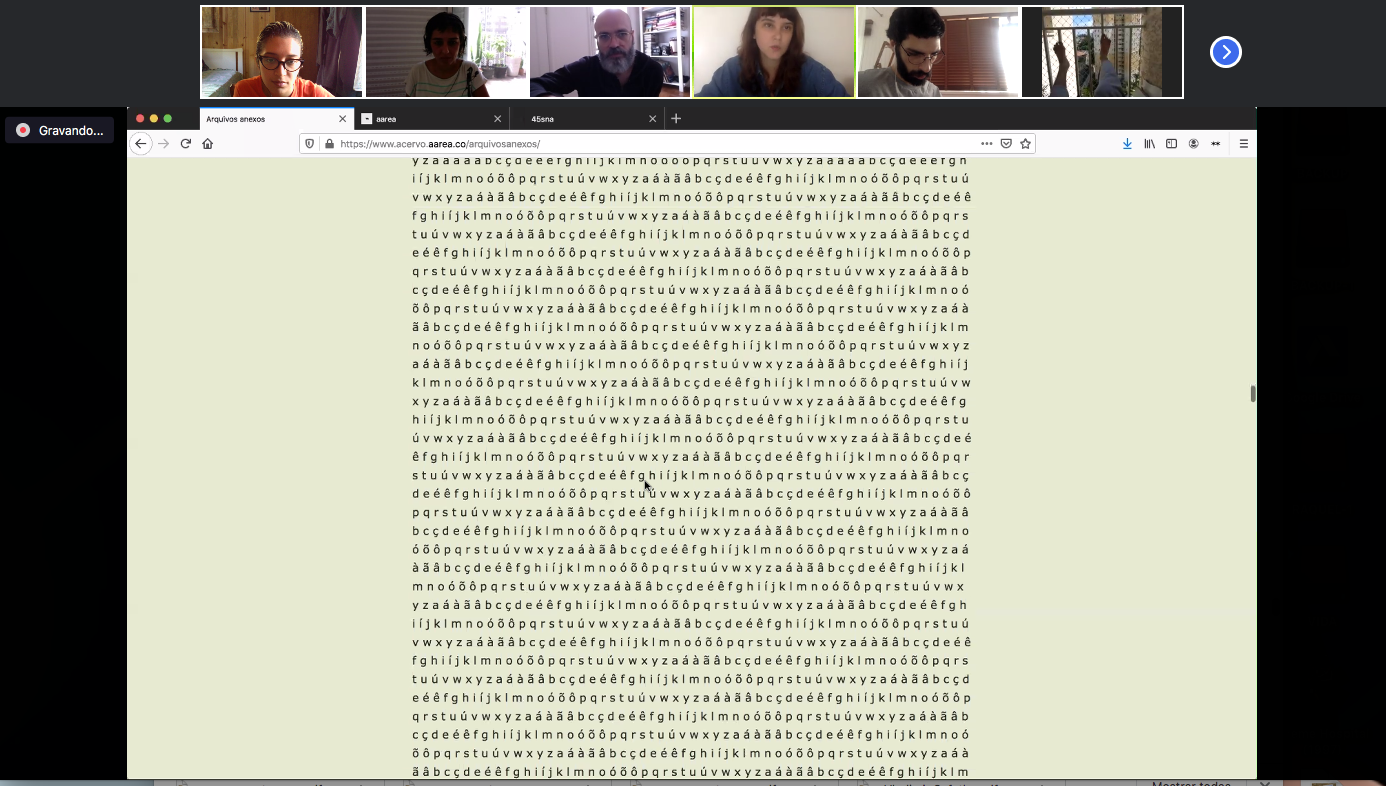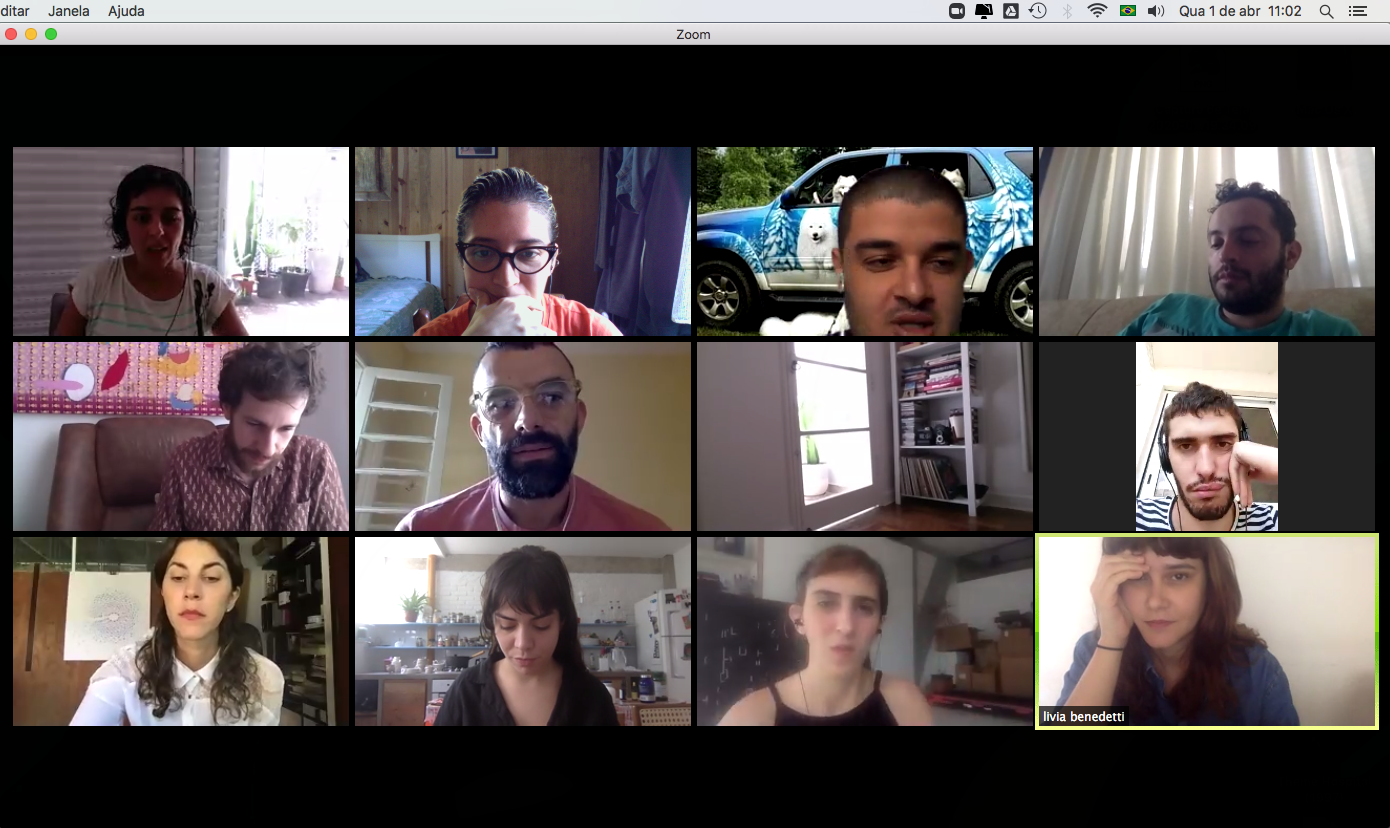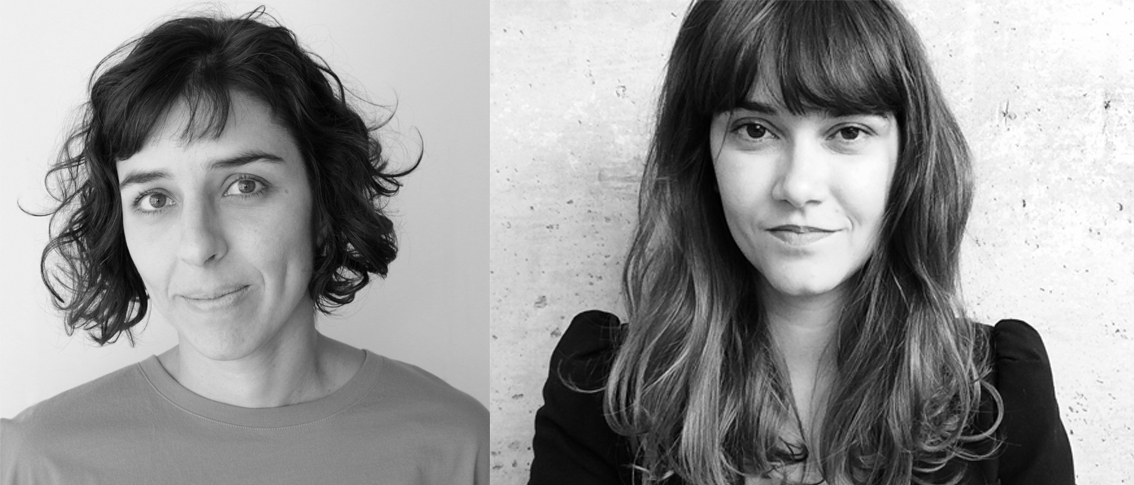

At the beginning of the year, Pivô announced changes in its residency program: from 2020 on, Pivô Research will be held free of charge for its participants, who receive continuous critical monitoring from curators invited by the institution at each cycle. Livia Benedetti and Marcela Vieira, creators of the digital platform aarea.co, were invited to coordinate the first cycle of the year (between March 10 and June 1). A few days after welcoming the residents, the COVID-19 pandemic made Pivô to halt all its public activities and the residency program had to be almost entirely rethought for the digital environment.
Leo Felipe: Amid so many misfortunes (postponing projects, closing the space, cancelling activities) it seems a lucky strike that Pivô has invited two curators whose research is developed precisely in the virtual environment. How did the interest in exploring the internet as a means for curatorial practice arise?
aarea: Exploring the implications of art on the internet emerged as an interest for us when we identified that, in Brazil, there was a very marked separation between the general art medium and the “new media” scene, or “art and technology” (with their artists, theorists, curators and spaces). Aarea seeks to summon artists and agents from the most diverse productions and thoughts to focus on the internet, making it one of the possible means of production, diffusion and circulation of works. The absence of geographical boundaries interests us and gives us more flexibility to work with artists, curators and institutions from other locations.
LF: Pivô Research is a well-established program, which has existed since 2013 and has as a fundamental characteristic the interaction between artists and curators in its space at Copan. What are the main challenges to translate the residence from the physical space to the virtual environment? On the other hand, what can the program gain from this translation?
a: The fact that Pivô is rooted in the centre of São Paulo and, more specifically, has become institutionalized through the occupation of physical space at Copan, makes its programming very oriented to its space, but it is also an institution that welcomes diversified productions, especially in the residency program. Developing an online residency program for Pivô carries many unprecedented possibilities, such as inviting interlocutors and collaborators from other parts of Brazil or the world, for discussions and exchanges with the residents, in a program that is also open to the wide public that the internet can reach. Resident artists have taken up our challenge to transfer part of their studio work to the internet, researching, dialoguing, or even thinking about new works for this medium (it is worth mentioning that, as usually happens in Pivô residences, there is no need for formalizing new works in that period). Together, we are striving to set ourselves up as a “group”: the casual coexistence that the studios provided requires an extra effort when it transposes to the internet, and for that, we have used several conference, sharing and message apps, playlists, etc. We feel that it has been important for all of us to work collectively in this moment of isolation and loneliness imposed by the pandemic.
LF: How was the selection process for the residency?
a: When Pivô invited us to curate the residency, there was already a list of the 13 selected residents, for whom we planned a series of collective and individual activities both in the physical space and online. In the first week of the residency, the COVID-19 pandemic changed the scenario very quickly in São Paulo and, as we have been working on the internet for three years, in a matter of days we adapted the entire program to virtual. Half of the original group joined and, to complete the group, we invited some artists to join, artists that we have followed and whose practices we knew could also be worked at a distance, in this exceptional moment that we are living in 2020.
LF: What is being planned for programming?
a: Despite happening remotely, the program will be very “in person”, with many meetings and live meetings, in groups and individually, also inviting people outside the program to talk with the artists. This residency cycle will occupy a lot of Pivô’s social media, with proposals from the residents themselves – together with the artists, we’re going to think about how to transpose their research to the internet.
LF: It is especially interesting that aarea is moulded to each project, without menus nor additional information. Besides, you work with artists who do not necessarily have the internet as research.
a: Aarea gives “carte blanche” to artists to occupy the entire space of the site with a new project, designed for the internet. With each edition, aarea becomes a different work of art – there are no links, texts, therefore, no file. And it is the artists’ proposals that point out what aarea is, where it goes, how it relates to the internet and art. Aarea artists do not usually work with the internet in their practices and, for this, we count on our technology and programming consultant, Adriano Ferrari, who makes the work possible from the most diverse tools. This phase of the conception of the work, between artist, curators and programmer, is usually very narrow and very rich in exchanges. We also count on the designers Cate Bloise and Victor Kenji and the audiovisual production by Mafe Simonsen – it is always important to talk about our collaborators, in the case of a project that has supported itself until now and does not have any financial resources from third parties, except in specific projects in which we have other institutions as partners (such as CCA Wattis Institute, Salón Nacional de Bogotá, SP-Arte, among others).
LF: aarea is approaching its 30th edition, to be carried out by Jac Leirner, who had never done work for the internet. Tell us a little bit about her work.
a: We are in the production phase and it is an immense honour to have Jac Leirner with us, since the beginning of aarea we wanted to invite her. She has been very generous in this process and extremely accurate in shifting her work to the internet. This work starts from photographs that Jac has been collecting for over three years, and it will be the first time that this archive generates a work. It is also the first time that she has made a work to be shown on a screen (computer or video), and we are very happy that she agreed to do this unprecedented development within her production.
LF: The COVID-19 pandemic is already severely affecting social and work relations. In this new scenario, the area of culture seems to be particularly affected. In your opinion, what will be the impact of coronavirus in the field of art?
a: We have been answering these questions for just two weeks since COVID-19 was declared a global pandemic by WHO and, therefore, it is too early to outline any analysis. What we have been following is that in a matter of days several digital initiatives have emerged from very different institutions and agents, which point to specific interests. It is interesting to see how their identities and programs are shifting to the internet. The situation of confinement and closed physical spaces for an indefinite period corroborates what aarea was already doing: considering the internet as one more possible space for art. If there were any taboos related to this, it is falling right now.

 Português
Português